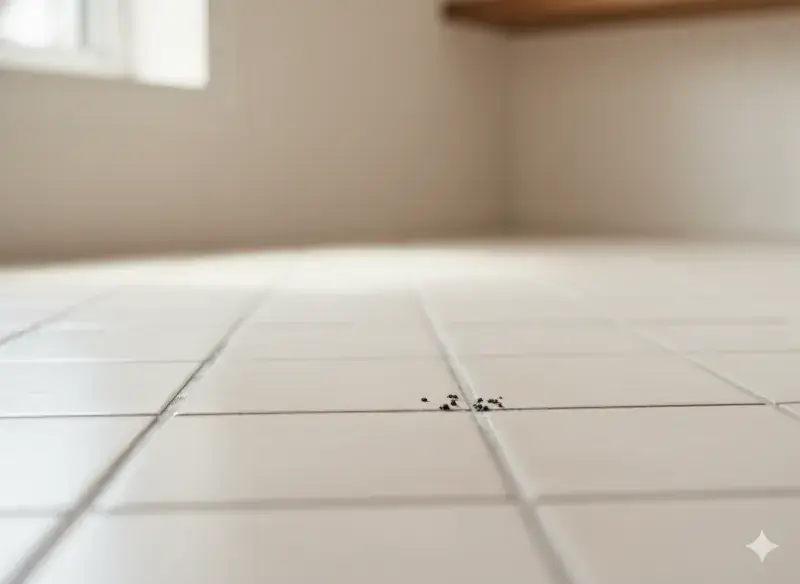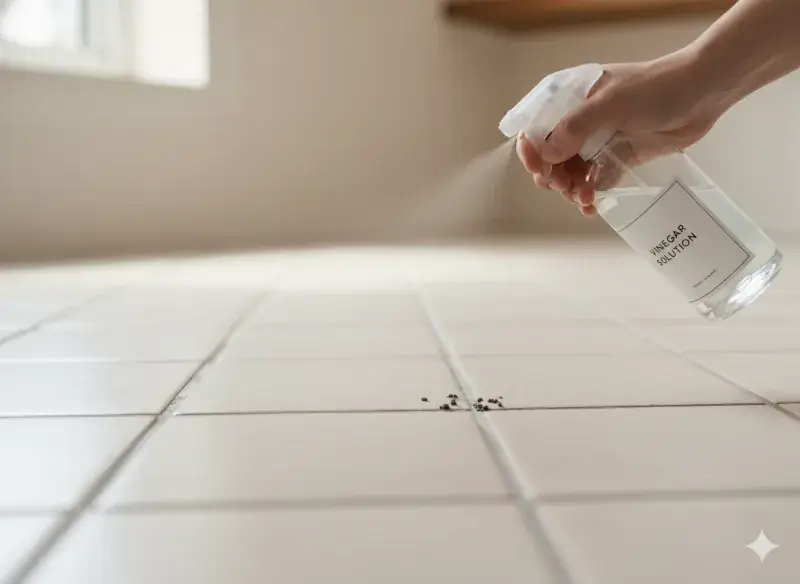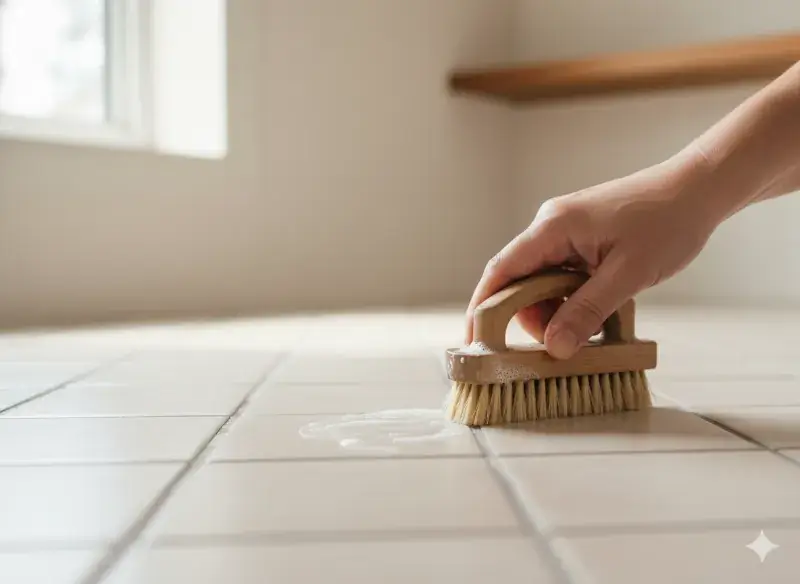
Few things make a bathroom feel dirtier than mold. Those dark spots in grout lines, fuzzy patches on the ceiling, or the musty smell around the shower—they instantly ruin the feeling of freshness.
I remember the first apartment I lived in had a tiny bathroom with no window. Within weeks, mold started creeping along the grout and ceiling corners. I tried ignoring it, hoping weekly wipes were enough. Big mistake. It spread so quickly that I ended up spending hours scrubbing with bleach, wishing I had acted sooner.
The good news? Mold is preventable, and even if it appears, it’s not a lost cause. With the right steps, you can remove it safely and stop it from coming back.
👉 For a full system of bathroom upkeep, see our Bathroom Cleaning Master Guide.
Why Mold Appears in Bathrooms
Bathrooms are the perfect breeding ground:
- Moisture. Steam from showers keeps surfaces damp.
- Poor ventilation. Small bathrooms without fans or windows trap humidity.
- Soap residue. It feeds mildew and makes surfaces sticky.
- Ignored corners. Grout lines, ceilings, and under shampoo bottles are prime mold spots.
💡 Think of mold as an uninvited guest. The more food (moisture + residue) you give it, the longer it stays.
Supplies You’ll Need to Remove Mold
- White vinegar or hydrogen peroxide (natural cleaners).
- Baking soda (boosts scrubbing power).
- Scrub brush or old toothbrush (for grout).
- Microfiber cloths.
- Spray bottle.
- Rubber gloves and mask (safety first).
- For stubborn cases: diluted bleach solution.
👉 For recommended tools, check our Best Bathroom Cleaning Supplies & Tools.
Step-by-Step: How to Remove Mold in Bathroom
1. Identify Mold Areas

Look closely at grout, ceiling corners, shower curtains, and under sink areas. Mold can be black, green, or even pink.
2. Apply Natural Cleaner First

- Fill a spray bottle with vinegar or hydrogen peroxide.
- Spray directly on moldy areas.
- Let it sit for 10–15 minutes to kill spores.
💡 Vinegar is surprisingly effective—strong smell at first, but it fades as it dries.
3. Scrub with Brush or Baking Soda Paste

- For grout: apply baking soda paste (baking soda + water).
- Scrub with stiff brush or old toothbrush.
- Rinse with warm water.
4. Tackle Stubborn Mold with Bleach (If Needed)
- Mix 1 cup bleach with 1 gallon of water.
- Ventilate bathroom (open door/fan).
- Apply with sponge or spray bottle.
- Let sit 10 minutes, then rinse.
⚠️ Never mix bleach with vinegar—it creates toxic fumes.
5. Wash Soft Surfaces
- Shower curtains/liners → machine wash with hot water + detergent.
- Bath mats → wash weekly to avoid mold spores settling.
- Towels → replace or wash in hot cycle.
6. Dry Everything Thoroughly
- Use fan or open windows.
- Wipe surfaces with dry microfiber cloth.
- The goal: leave nothing damp for mold to grow back.
Preventing Mold from Coming Back
Cleaning is only half the battle. Prevention keeps mold away long-term:
- Run exhaust fan during & after showers (15–20 mins).
- Crack window or leave bathroom door open to reduce humidity.
- Wipe down wet surfaces after each shower.
- Squeegee glass and tiles daily.
- Store fewer bottles in the shower—water collects under them.
- Deep clean grout monthly (see Bathroom Cleaning Checklist).
💡 Small habit, big win: keep a microfiber cloth in the bathroom. A quick wipe after showering prevents hours of scrubbing later.
Eco-Friendly Mold Removal Options
If you prefer natural methods:
- Vinegar kills 80%+ of mold species.
- Hydrogen peroxide disinfects without strong odor.
- Tea tree oil mixed with water (1 tsp oil + 1 cup water) works as a natural antifungal spray.
👉 Explore more in our Eco-Friendly Bathroom Cleaning Tips.
When to Call Professionals
Sometimes mold is beyond DIY:
- Large patches covering walls/ceilings.
- Mold keeps returning despite cleaning.
- Strong musty odor that doesn’t go away.
- Health issues (allergies, breathing problems).
Professionals can do deep treatments like steaming grout and using commercial-grade products.
👉 See our guide: Hiring Professional Bathroom Cleaning Services.
FAQs
Q: Can I just paint over moldy grout or walls?
No—mold will grow back through the paint. Always clean and remove it first.
Q: Is vinegar safe for all surfaces?
Yes, except natural stone like marble or granite (it can etch the surface).
Q: How often should I check for mold?
Do a quick scan weekly, especially grout and ceiling corners.
Q: Can I use essential oils alone to kill mold?
No, they’re best as prevention after cleaning, not as the main treatment.
Closing
Mold might look scary, but it’s manageable once you know the steps. Spray, scrub, rinse, and most importantly—keep things dry.
Next time you spot a dark patch on grout or a musty smell, act fast. A few minutes today saves hours of scrubbing tomorrow.
👉 Want the full bathroom reset? Check our Bathroom Cleaning Master Guide for complete checklists and routines.
